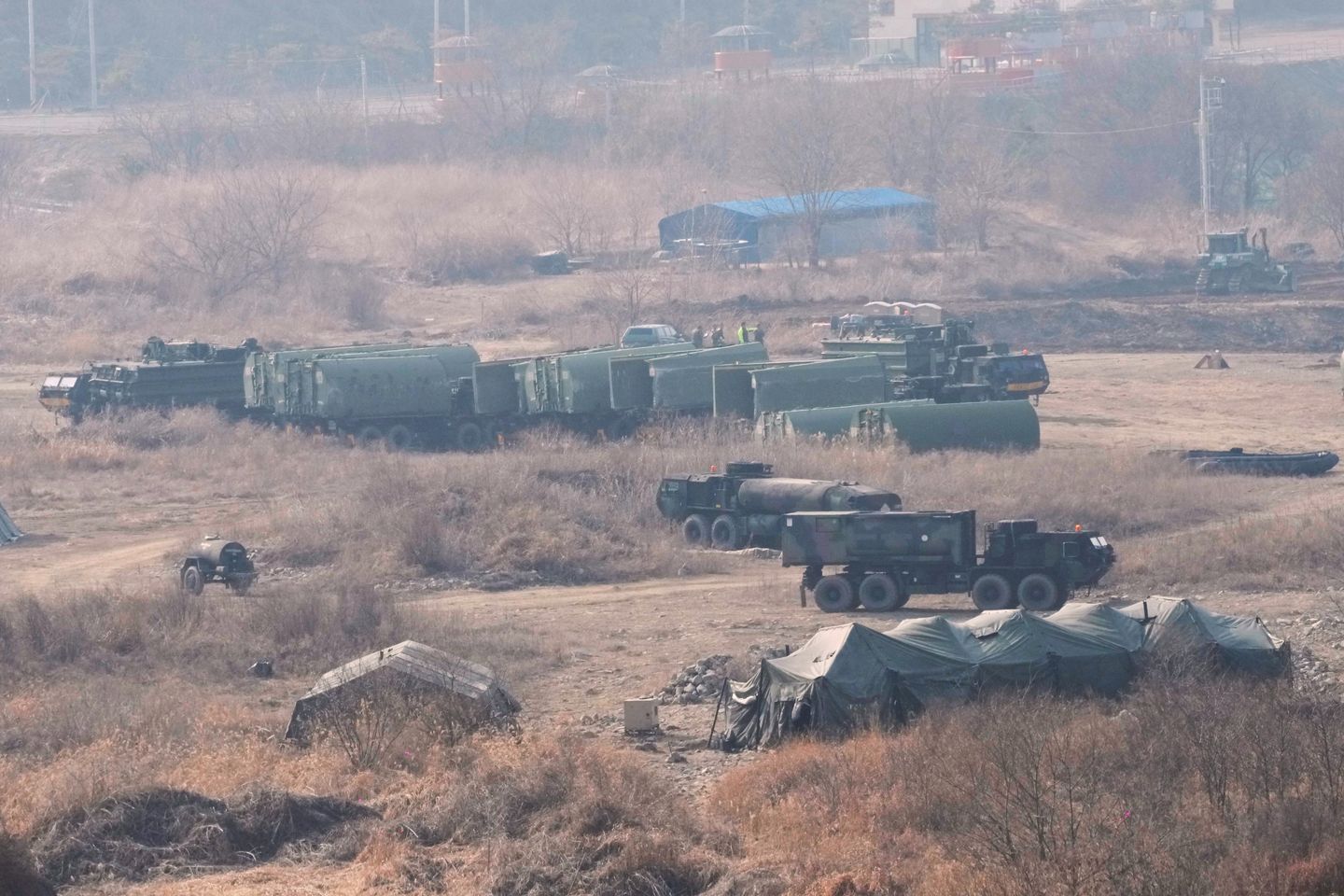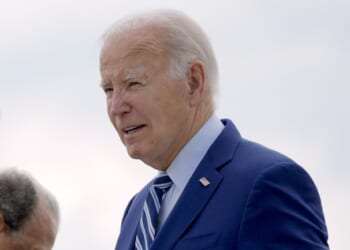
A version of this story appeared in the daily Threat Status newsletter from The Washington Times.
Click here to receive Threat Status delivered directly to your inbox each weekday.
SEOUL, South Korea — For the newly inaugurated Trump administration, it was a duo of firsts on the Korean peninsula Monday: the first South Korea-U.S. joint military drills and the first missile barrage fired by North Korea.
Pyongyang test-fired a series of short-range ballistic missiles into the Yellow Sea at around 1:50 p.m., Seoul’s Joint Chiefs said. That was just hours after South Korean and U.S. forces began the March 10-21 “Freedom Shield” exercises, which the North called “a dangerously provocative act.”
Drills include “urban combat operations, field hospital operations, mass casualty treatment and evacuation, field artillery exercises, air assault training, wet-gap crossing, air defense artillery asset deployment and validation, and a joint assault exercise with the U.S. Marine Corps,” U.S. Forces Korea said in a press release. The drills are meant to “strengthen interoperability, reinforce the alliance’s combined defense posture and increase combat readiness and lethality” on the long-divided and heavily armed peninsula.
The combination of joint allied drills and fury from North Koreans who maintain they are a preparation for war is hardly unique: The dynamic has pertained for decades. Even so, as major questions hover over Washingtons commitment to its traditional NATO allies, Seoul is jittery.
With the Trump administration deeply embroiled in European affairs in its first weeks in office, there have no-high level bilateral visits to establish relationships and coordinate strategy. And with South Korea currently run by a caretaker president as impeached President Yoon Suk Yeol awaits a court decision on his fate, there has been a de facto policy state of limbo here.
Those jitters were on full display Monday as the National Assembly created a bilateral committee of 163 lawmakers meant to strengthen the relationship with Washington. The panel’s inaugural meeting was joined by acting U.S. Ambassador Joseph Yun.
SEE ALSO: Kim inspects what North Korea claims is a nuclear-powered submarine
There is much for the new organization to mull — based on both precedent with Mr. Trump and ongoing developments.
In his first term,Mr. Trump cut back on joint military exercises in order to, in the words of one American general, “give diplomacy space to work.” It is unclear whether Mr. Trump will seek to rekindle his personal diplomatic outreach with North Korean leader Kim Jong-un, but military professionals have made clear that drills are still essential to hone readiness.
Mr. Trump in his first term also spoke of reducing U.S. forces in South Korea and requiring Seoul to pay a much higher amount to cover the cost of the security the U.S. was providing. Monday’s events revived many of those uncertainties.
“Live-fire exercises serve multiple purposes — you get to test your [communications] and logistics and the units that fire the weapons, and you get to test the reliability of the weapons systems,” said Daniel Pinkston, a visiting professor of international relations at Seoul’s Yonsei University, after North Korea missile test Monday.
But he suggested Pyongyang had a political, rather than technical, motive for its response, noting, “These are deployed systems, not something that is under R&D.”
If Mr. Trump does restart negotiations with Mr. Kim, they are going to be more difficult than before, experts predict.
“Diplomatic negotiations aim to reach some arrangement to obtain goals on converged interests,” Mr. Pinkston said. “Where is the overlap to create a bargaining space?”
Mr. Kim is more secure than he was during the first Trump administration. The 2024 comprehensive strategic partnership with Russia has given him a new ally, slashing his former unilateral dependence on China.
“North Korea is less interested in a deal in 2019 and is under much less pressure to make a deal,” said Andrei Lankov, a North Korea expert at Seoul’s Kookmin University.
Seoul’s Constitutional Court is expected to rule on the impeachment of Mr. Yoon — a hawk on North Korea — as early as this week. He was impeached following his short-lived decree of martial law last December.
If the court does order Mr. Yoon to step down, a presidential election must take place within 60 days. On the basis of current polls, the opposition Democratic Party of Korea would likely win.
The DPK has customarily preferred engagement with North Korea to confrontation, while also taking a more independent approach toward national defense.
Most notably, the party put supported a shift in operational control of South Korean troops in wartime away from a U.S. general to a local commander, something the U.S. has resisted.
But now, with some voices in Mr. Trump’s defense team arguing for a refocus away from North Korea to China, the DPK’s views may be in flux and not so ready to dilute the strength of the American security commitment.
“The self-styled South Korean nationalist left is much less enthusiastic about a U.S. force reduction than they used to be,” said Mr. Lankov. “They are losing their naive ideas about North Korea. They increasingly see it as a threat, so they are not going to be very enthusiastic. The world has changed.”








